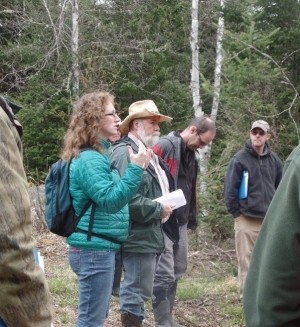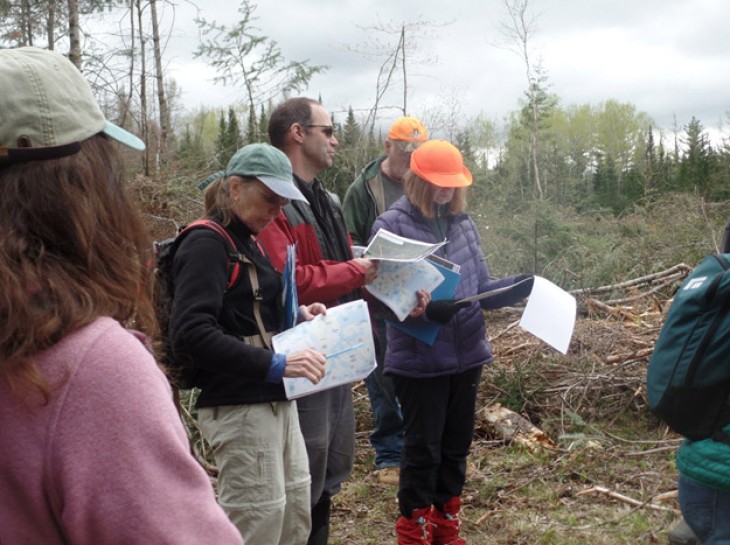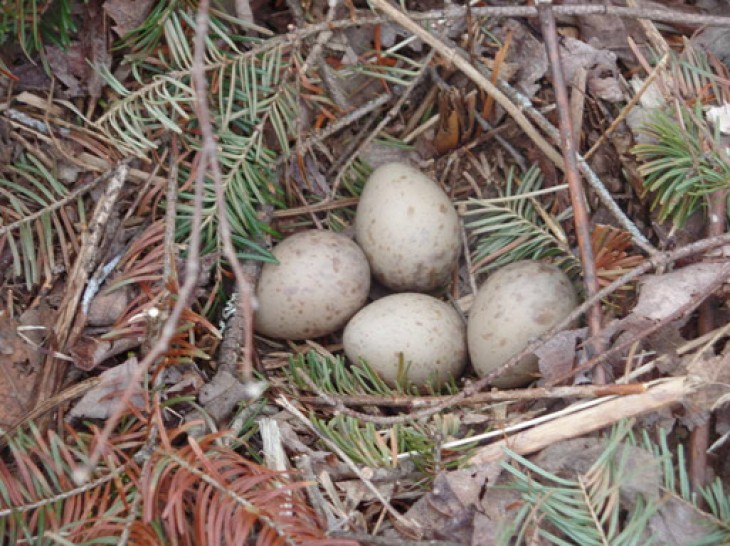
Carroll Stream flows clear and cold this time of year through the woods of northern New Hampshire, collecting the spring’s last snowmelt from the western slope of Cherry Mountain. Along its course, newly hatched brook trout linger in gravel nests located near groundwater upwellings and the tail ends of pools. As the season advances, the young fish will move out to feed in both riffles and pools, and find shelter beneath undercut banks and fallen trees. Although these stream features are vitally important, brook trout also depend on the watershed’s forests and wetlands for survival; wooded buffers control erosion and keep waters cool, while wetlands filter pollutants and moderate extremes in streamflow.
These messages resonated last Saturday with a group of two dozen people gathered on a logging bridge over Carroll Stream, surrounded by 1,800 acres in the care of Wagner Forest Management. They had come from just up the road and from as far away as Rhode Island to attend “Wetlands and Forestry: Optimizing the Benefits,” a field workshop organized by the New Hampshire Timberland Owners Association in concert with Northern Woodlands. As the group admired the bridge’s design and the stable stream bank, New Hampshire Fish and Game Biologist Jill Kilborn described the state’s efforts to maintain this stretch of water as a wild trout fishery.
At other stops along the four-hour walk, instructors explained how to: properly size and install culverts; use information about soils to develop wildlife-friendly harvest strategies; and supplement swamps and boggy woodlands with young forest patches that provide similar habitat features, such as a dense understory, open canopy, and a dispersion of older trees.
One of the day’s highlights was the sighting of a woodcock incubating eggs near the edge of an area recently harvested to enhance woodcock habitat. When the eggs hatch, Kilborn explained, the downy chicks will scurry about and feed independently. Until they can fly, they will need a relatively open ground layer to enable movement as well as access to cover from predators. Like brook trout, woodcock depend on a variety of small-scale habitat features within a predominantly forested landscape.
Back in 2008, this understanding guided wildlife biologist John Lanier and his collaborator at Wagner, Ray Berthiaume, as they designed a long-term management plan to help shore up declining woodcock numbers. Lanier passed away in March after an extraordinary career with New Hampshire Fish and Game, the US Forest Service, and the Wildlife Management Institute, and a retirement steeped in conservation activities. The animals thriving now in the woods and waters of Carroll Stream are a testament to his lasting legacy.
Read more about the life cycle of brook trout and managing woods for woodcock.



